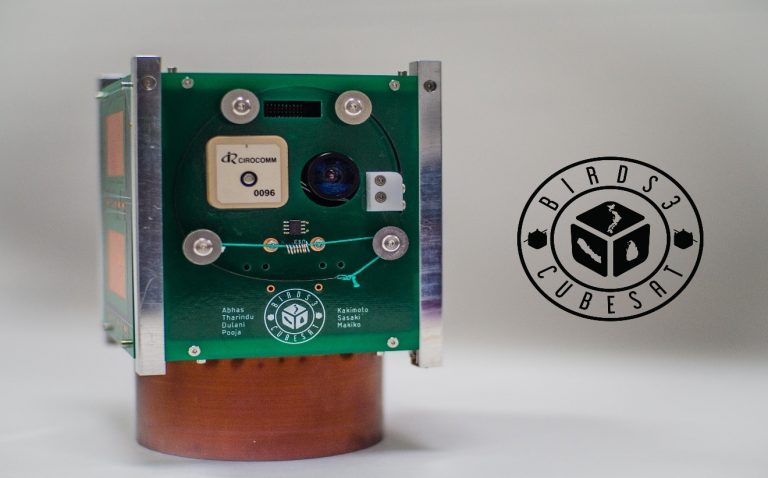
Nepal prepares the launch of its First satellite in space
The BIRDS 3 project- UPDATE on Nepal’s space ambitions
(Nepalese Voice, 2018)- Nepal Academy of Science and Technology (NAST), under the leadership of former Institute of Engineering (IOE) Dean prof. Dr. Jiba Raj Pokharel signed an agreement with Kyutech on Nov 21, 2017, to start up plans for the launch of the country’s first satellite. The project is being led by Kyushu Institute of Technology in Japan and involves students from Sri Lanka, Bhutan, Nepal and Japan. The BIRDS 3, is an ambitious and elaborate project that helps participating nations make the first step towards creating indigenous space program by designing, building, testing, launching and operating their first satellites.
After much deliberation in financing the funds for the project last year due to an overhaul in tax, VAT and currency exchange, the Government of Nepal through the Finance ministry together with the Ministry of Education, Science and Technology, decided that a portion of the remaining unused budget from the end of fiscal year 2018 be transferred under the project’s name to clear up the remaining payment.
For quite some time, Nepal has had its orbital slots in the space provided by the International Telecommunication Union (ITU). The two orbital slots for Nepal in 123.3° East longitude and 50° East longitude are to be used for Fixed Satellite Service (FSS) and Broadcast Satellite Service (BSS). However, the NepaliSat-1 will be using the geo-stationary Orbit (GEO), which is set at an altitude of 36,000 km. NepaliSat-1 is set to be deployed alongside Srilankan satellite RavaanaSat and Japanese Satellite, Uguisu, from the International Space Station Orbit or the ISS orbit at an altitude of 400km.
Once in operation, the application of the satellite is expected to resume both governmental services and commercial services. While the government services will include new plans for e-governance services, telecommunication service to remote areas and an improved disaster response and emergency communication, the commercial application will focus on Direct to Home (DTH) TV services, backhaul for cellular tower, VSAT and internet broadband, and will also provide connectivity to airplanes for in-flight WiFi internet service.
Kantipur TV first announced the news of its launch in January this year, and now with the completion of the Critical Design Review at the start of September, we are hopeful that the country’s first satellite will see the light of space by April, 2019.





